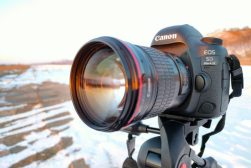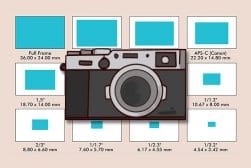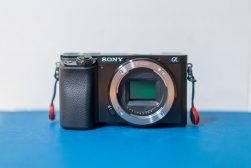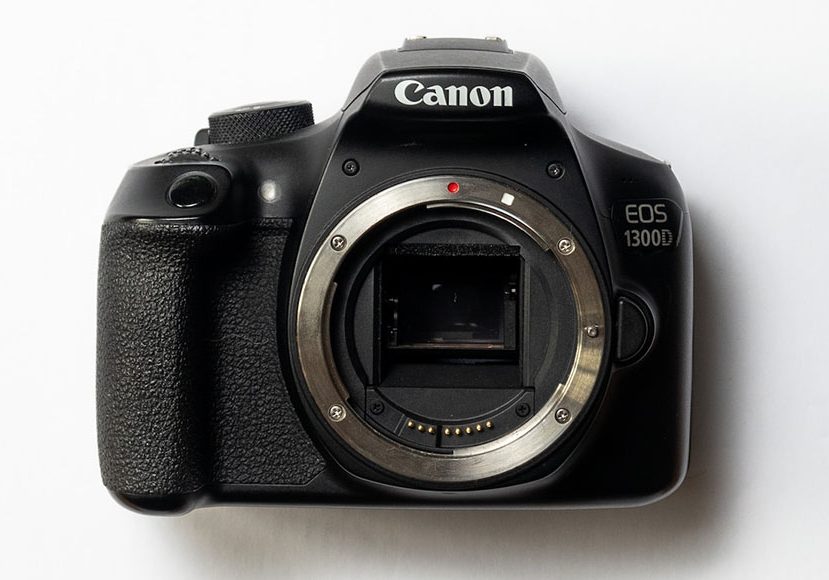
APS-C Camera Sensors (Advantages & Disadvantages in 2023)
APS-C sensors offer a balance of size, cost, and image quality, making them a popular choice for both photographers, but is an APS-C camera right for you?
Learn | By Ana Mireles
Are you wondering about the advantages and disadvantages of APS-C camera sensors?
If you’re undecided whether you should buy an APS-C camera or not, you’re in the right place. In this article, I’ll tell you all about this sensor format.
I’ll also compare it with other popular formats – most importantly, with full-frame sensors. However, I’ll also talk briefly about the differences between medium format and micro four-thirds.
I’ll end up by sharing some of the latest news regarding APS-C cameras and what the future of this format looks like.
Table of Contents
What is an APS-C Sensor?
An APS-C sensor is a digital camera sensor that’s smaller than full-frame, typically measuring around 25.1 x 16.7 mm, offering a crop factor between 1.5x and 1.6x depending on the manufacturer.
All digital cameras have a photosensitive sensor that captures the light that’s later converted into a photograph by the camera’s software.
Different camera sensors have a physical size difference. A sensor that’s equivalent in size to the traditional 135mm film format is called a full-frame sensor.
Anything smaller than a full frame is considered a crop sensor camera. The APS-C cameras belong to this category. APS-C meaning Advanced Photo System.
An APS-C-sized sensor is 25.1 x 16.7 mm. Therefore the aspect ratio is 3:2. This standard measurement comes from the Advanced Photo System Type-C film format – now discontinued.
You’ll notice that they share the same name both in digital and analogue photography – APS-C format cameras.
I said that the size was approximate because 25.1 x 16.7 mm was the original film size. However, APS digital image formats may vary according to the camera manufacturer.
Canon cameras have a sensor that’s 22.2 x 14.8 mm and have a crop factor of 1.6. Instead, Nikon, Sony, Pentax, and Fuji camera’s sensor size is 23.6 x 15.7 with a crop factor of 1.5.
What are the characteristics of the APS-C Sensor?
In the previous section, I explained what an APS-C format is and its characteristics.
Now, let’s see those characteristics more in-depth and what they mean for your photography.
Crop Factor

Credit: Hotshot977, Public Domain, via Wikimedia Commons
When camera manufacturers moved into digital photography, they had full-frame image sensors the size of a 135mm film frame.
Full-frame sensors are the biggest ones you can find on a digital SLR. If a camera has a smaller sensor, then it has a cropped frame.
So, the crop factor is the calculation you have to make to convert the field of view (FOV) of a crop sensor in comparison to its full-frame counterparts.
This is useful if you want to use the same lens in both types of camera bodies. The crop factor for the APS-C format is either 1.5 or 1.6 depending on the manufacturer.
Canon APS-C sensor cameras have a 1.6 crop factor. Nikon and most other brands have slightly larger sensors – so their crop factor is 1.5.
So, if you have a 35mm full frame lens, it will become a 52.5mm lens (35×1.5) or a 56mm lens (35×1.6) on an APS-C camera. Normal lenses become telephoto lenses, and so on. This also means that if you use an APS-C lens on a full-frame camera, you won’t be using a full-frame sensor.
Aspect Ratio
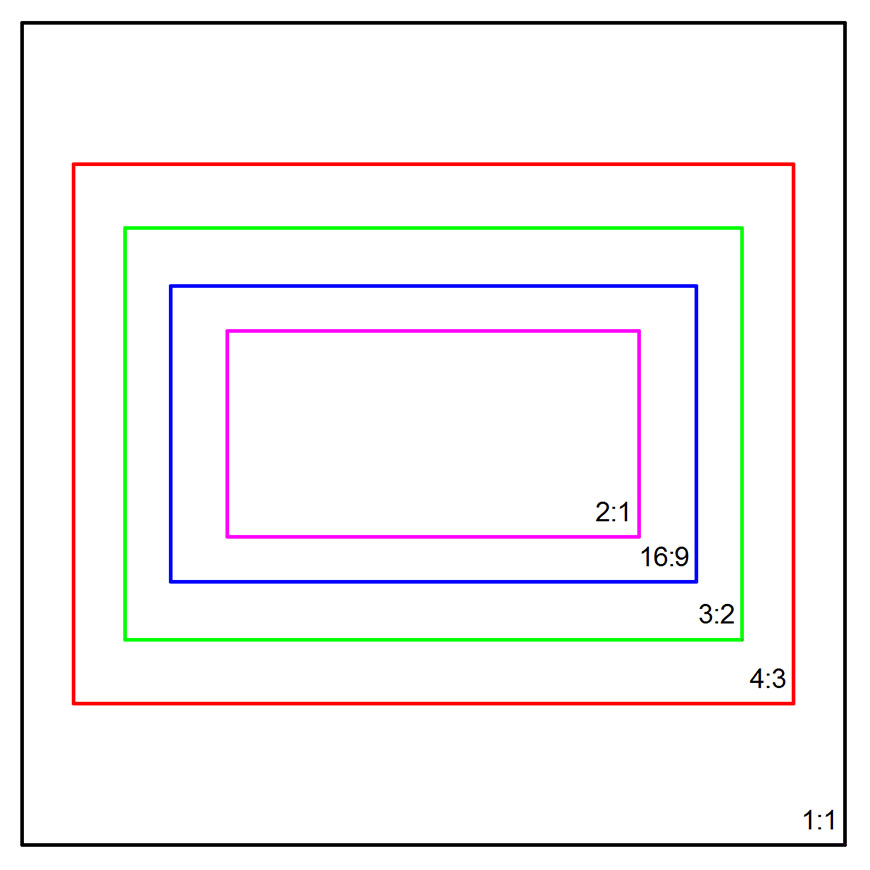
Credit: Bautsch, CC0, via Wikimedia Commons
The aspect ratio is the proportion between the long side and the short side of the image sensor. The APS-C sensor keeps the same aspect ratio as the full-frame sensor which is 3:2.
This is one of the most common aspect ratios in photography. Therefore, it also matches the proportion of popular printing sizes such as the 4×6″ – also known as postcard size.
Depth of field
The depth of field is different if you use a full-frame camera or an APS-C camera. This isn’t because the image sensor has different characteristics but because the size has an impact on the focal length and the distance to the subject. Also, consider that you need to apply the crop factor to the aperture.
Let’s say you photograph a subject using a full-frame camera with an 80mm and an aperture of f/9. To recreate the same framing and depth of field with an APS-C camera that has a 1.6 crop factor, you’ll need a 50mm lens with an f/5.6 aperture.
To avoid having to make these calculations in your head, there’s a pretty useful Depth of Field Equivalence Calculator on the Cambridge in Color website.
Overview of Sensor Sizes and Their Significance
A digital camera will always have an image sensor inside to capture the information that will be translated into a photo.
There are different image sensor formats that change according to the type of camera and even the camera model. The format refers to the image sensor size which has a direct influence on the number and size of the pixels, the dynamic range, and the overall image quality.
Let’s see some of the available formats and how they compare to the APS-C image sensor.
Medium format sensors
A medium format image sensor is almost four times bigger than an APS-C, although the exact size changes across camera models.
Medium format cameras offer the best image quality, but the price is extremely high. It’s a format used only by professional photographers with specific needs in resolution and quality.
Full-frame sensors
Full frame and APS-C are the two most common formats used by professionals and serious amateurs. Full frame cameras based their size on film cameras, while the APS-C is 1.5 or 1.6 times smaller.
This means that a full-frame image sensor captures more light and more details because the pixels can be bigger – even if sometimes they are fewer than the MP on an APS-C sensor.
Micro Four-Thirds sensors
These sensors are slightly smaller than the APS-C – in fact, their crop factor is 2x compared to a full-frame sensor. Another difference is that the aspect ratio is 4:3 instead of 3:2 of the full frame and APS-C image sensor.
The two biggest advantages of micro four thirds cameras over APS-C cameras are the price and the portability of the micro four-thirds cameras.
Pixel Density and Resolution
Resolution is a fairly common term that most people have heard about – pixel density, not so much. That’s why there’s so much confusion about why can an APS-C camera have a higher resolution than its full-frame counterparts.
Do higher-resolution APS-C sensors have better image quality than a lower-resolution full-frame sensor? If so, why pay so much more?
You probably have these and other similar questions in mind when deciding where to invest your money, and you face the dreaded full-frame vs crop sensor choice.
To make it as simple as possible, the resolution refers to the number of pixels present inside the sensor. Instead, the pixel density is how packed those pixels are in the available space.
Let’s see what this means if you compare a full-frame vs APS-C camera – keeping in mind that an APS-C is smaller than a full-frame sensor.
There are two choices. The first one is that you have pixels the same size and are placed with the same pixel density in both sensors – then, you would have more pixels in the full-frame camera.
The second choice is that you have the same number of pixels. Then, you would need to make the pixels smaller or cramp them up closer together to make them fit in the smaller sensor.
So, a high pixel density is a good thing because you capture more information. However, this is true only to a certain point. Once the pixels get too close together, the light can ‘spill’ to adjacent pixels and start to create digital noise.
That’s why APS-C cameras don’t perform as well in low light and why you may be better off with a lower resolution full-frame vs an APS-C camera with higher resolution.
Is APS-C Any Good? Advantages of APS-C Sensors
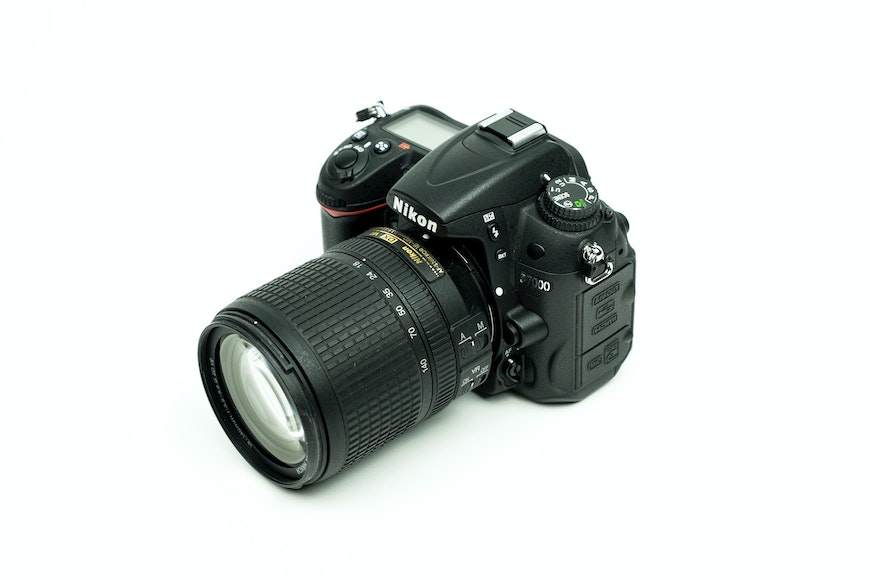
Credit: Math
The short answer is yes, APS-C cameras can be very good. Like anything else in photography, it has its pros and cons. Therefore, APS-C cameras are more suitable for certain uses than others. Here are some of its advantages.
Cost-Effectiveness
APS-C cameras are considerably less expensive than any full-frame camera you can on the market. Sometimes, the crop sensor camera will have more megapixels than a full-frame camera and still cost less money.
For example, the Canon EOS 90D has a 32.9MP APS-C digital sensor while the full-frame that’s closest in price (slightly higher, though) is the Canon EOS 6D Mark II with a 26.2MP image sensor.
It’s not just the full-frame body that’s more expensive – also the lenses.
Versatility
APS-C cameras are suitable for most photographic genres and are used by professionals from all fields.
Since they are lighter and smaller than full-frame sensor cameras, they’re better to carry them for portrait sessions on location, travel and street photography.
Also, because the focal length becomes longer thanks to the crop factor, they’re great for wildlife or sports photography. This way, shorter telephoto lenses can zoom into subjects that are further away.
Since APS-C image sensors don’t perform great in low light, they’re also a good choice for studio work. This is because you’ll have full control of light – therefore, the best image quality.
Lens Compatibility
The availability of dedicated APS-C lenses and their compatibility with other lenses varies from brand to brand.
For example, Canon EF lenses are compatible with both APS-C and full-frame cameras. Then, there are EF-S lenses for APS-C sensor DSLR cameras and EF-M lenses for APS-C mirrorless cameras.
Also, consider that most of the time is possible to use full-frame lenses on an APS-C camera. This is because the circle of projection of a full-frame sense is bigger – as it’s meant to cover a full-frame sensor.
As a result, the smaller APS-C sensor fits perfectly inside the circle of projection. You’ll be missing part of the image that’s captured by the lens but not by the sensor.
In short, an APS-C camera has a wider selection of lenses.
Portability
Another advantage of the APS-C cameras is the size. They’re smaller and more portable than full-frame cameras while still having a high resolution – sometimes even more.
If you’re shooting subjects that are further away, you’ll need shorter focal lengths to reach them than the ones you would need for a full-frame sensor camera.
So, both the camera body and the lens are smaller and lighter. This makes the APS-C cameras better for on-the-go photography if you need great image quality and high resolution.
The portability of APS-C mirrorless cameras is even more than that of digital SLR ones.
Wider coverage in certain scenarios.
As I mentioned before, using an APS-C sensor, ‘extends’ the focal length of your lens. This ‘additional zoom’ comes in quite handy in certain situations.
For example, bird photographers usually need a 500mm or 600mm super-telephoto lens. These can be quite expensive and heavy to handle.
Instead, a 400 telephoto lens used on the crop sensor of an advanced photo system becomes a 600mm lens with Nikon or a 640mm with Canon.
What are the Disadvantages of APS-C? Limitations and Considerations

Noise is more prevalent in the average APS-C sensor camera than a full frame camera when shot at high ISOs | Credit: Luis Dalvan
Crop factor and its impact on photography
While you’re gaining focal length when you use APS-C cameras compared to full-frame cameras, it also means that you’ll have a harder time doing wide-angle shots.
So, the crop conversion is good for sports or wildlife photography – but it’s not for real estate or landscape photography.
In these cases, you need a lens that has an actual focal length much wider than the one you actually need. Let’s say that you’re looking for an 18mm lens. If you were using a full-frame camera, you buy an 18mm lens, and that’s it, but for a crop sensor, you’d need a 12mm lens.
Availability of dedicated APS-C lenses
Most brands have fewer lenses dedicated to APS-C camera sensors. This isn’t necessarily a problem because most manufacturers have a lens mount that allows full-frame lenses to fit the APS-C one.
However, full-frame lenses are bigger and more expensive. This is something to keep in mind when you choose to go with crop sensors.
Low-Light Performance
In my opinion, this is the biggest downside of APS-C sensors. Even if most cameras have a wide ISO range, the images taken in low light get terribly noisy at ISO 800 or 1600. Of course, this changes on each camera.
However, if you compare full-frame and APS-C in low light conditions and their ISO performance, the full-frame cameras will always get the advantage.
This is because full-frame sensors are bigger which usually means bigger pixels that capture more light. There’s also less spillage between pixels avoiding excessive noise.
Depth of Field
Consider that the depth of field is defined by the aperture, the focal length and the distance between the camera and the subject.
This makes it a bit difficult to compare the depth of field based on sensor sizes alone. However, generally speaking, full-frame cameras tend to be better if you want a shallow depth of field.
This is because a smaller part of the image will be sharp in comparison to the blurred background.
Lens Compatibility and Image Circle of the APS-C Mount
Full-frame lenses create a big image circle (AKA circle of projection) because it’s meant to cover full-frame sensors – which are bigger.
If you use a full-frame lens on an APS-C camera, you’ll lose the outer part of the image circle. However, the camera and the lens can capture a perfectly good image.
This isn’t the case if you turn things around. An APS-C lens casts a smaller image circle because the APS-C sensors are smaller. Therefore, you can’t use an APS-C lens on full-frame cameras. Most of them have a different lens mount too, so you can even connect it.
There is one consideration when using a full-frame lens on an APS-C camera. Since APS-C sensors only capture the central part of the image circle, it’s as if you were zooming in on the subject. This means that the lens will perform as a telephoto affecting the field of view.
Recommendations for Photographers and Filmmakers
As you can see, there are many considerations to make when deciding which to buy between full-frame and APS-C.
You need to be well aware of your needs before you make the decision. Your budget is the first consideration and the easiest one. APS-C cameras and lenses are less expensive than full-frame camera systems. But will there be enough for you?
While they may be less expensive, it doesn’t mean they’re cheap. There’s no need to spend your money on something you can’t use. In this case, it’s better to wait and make a bigger investment.
Also, consider the opposite situation. Is it worth spending more money on a full-frame camera if an APS-C is more than enough for your needs?
Hopefully, this article gives you enough information to make a good decision. It’s now up to you – it’s not easy to decide which direction is your photographic career going to take. At least, not at the beginning of it.
What is the Future of APS-C Sensors?
There’s no reason to believe that full-frame and APS-C sensors will continue to co-exist peacefully. To my knowledge, none of the manufacturers has talked about discontinuing this format.
On the contrary, Canon released the R7 and R10 which have the latest lens mount – signalling that they have a bright future.
Fujifilm recently released two APS-C cameras – X-H2S in 2022 and the X-S20 in 2023. Sony hasn’t released an APS-C camera body recently, but they did release three new lenses for this format.
So, the question isn’t so much about the sensor but about where it’s placed. Are DSLR cameras still going to be around? Or should you opt for mirrorless cameras? Remember that both full-frame and APS-C sensors come in both types of cameras.





